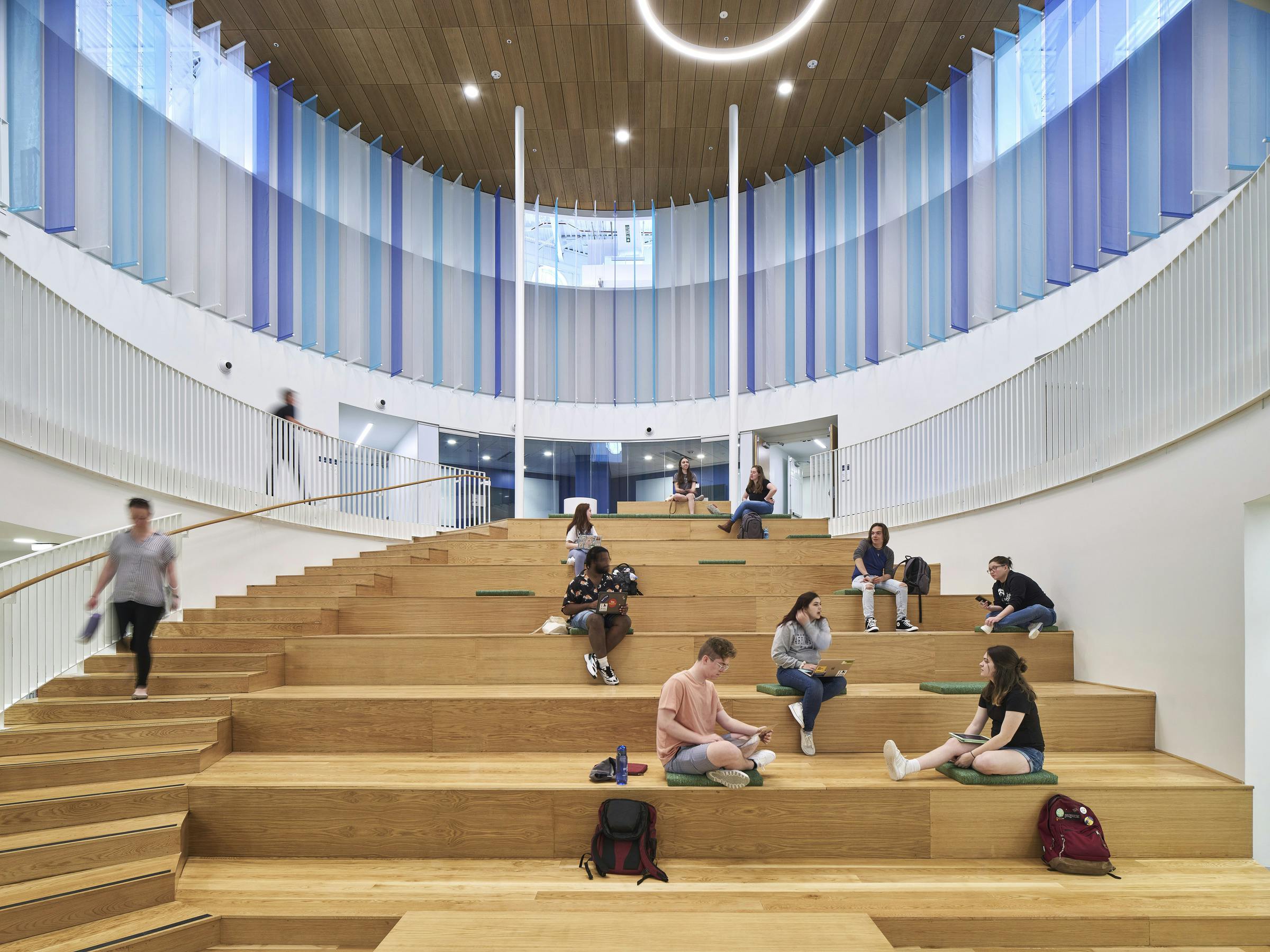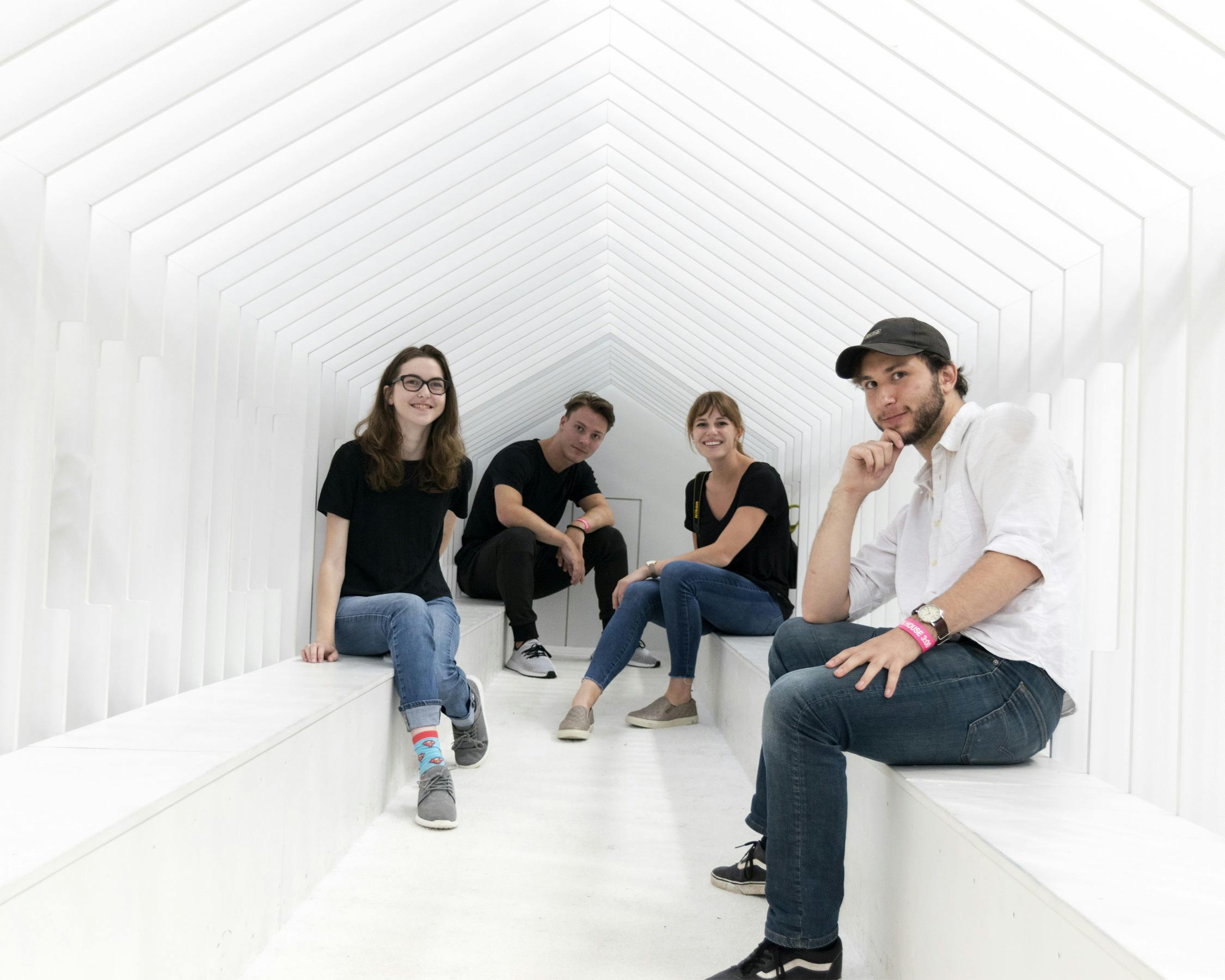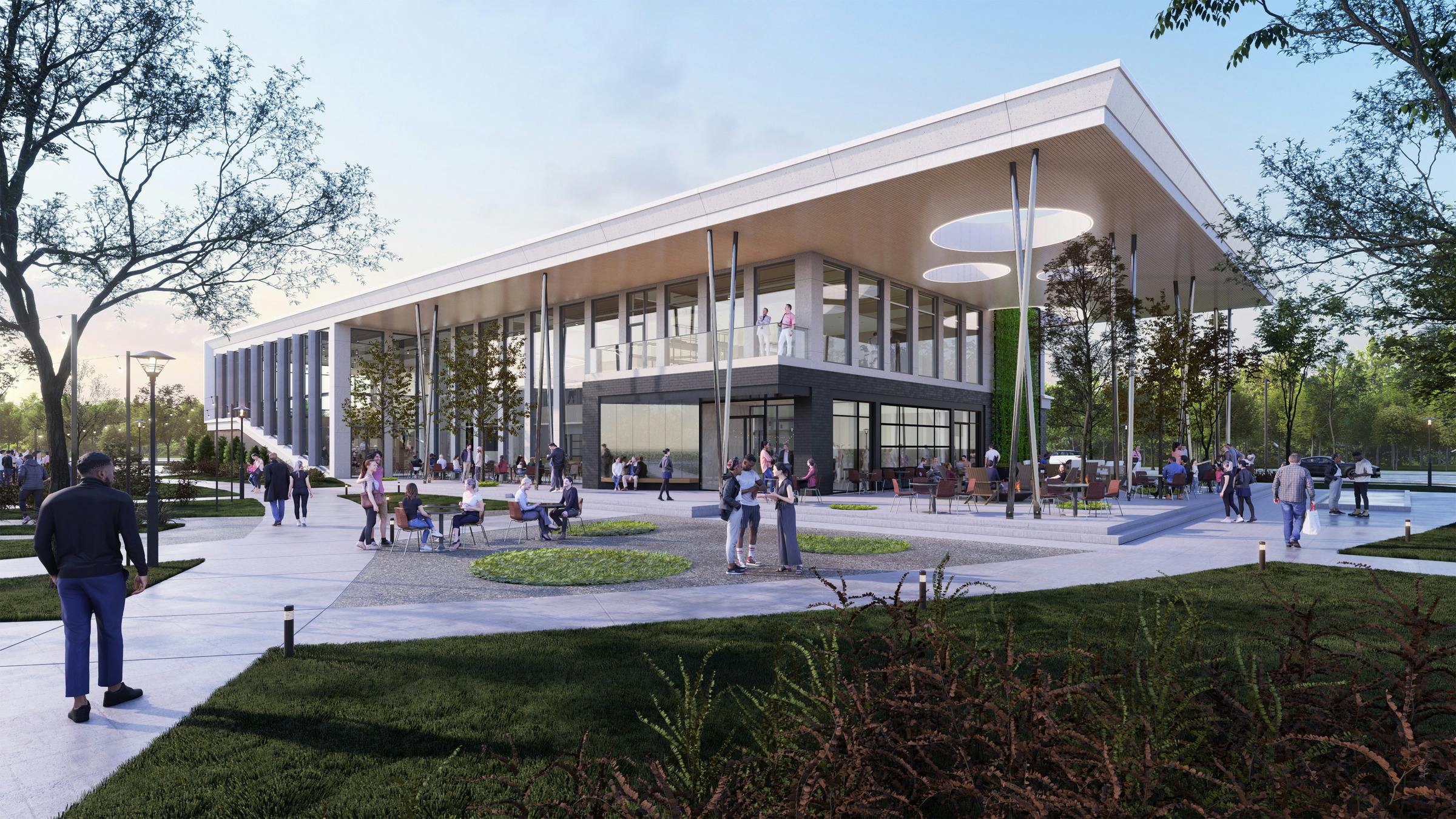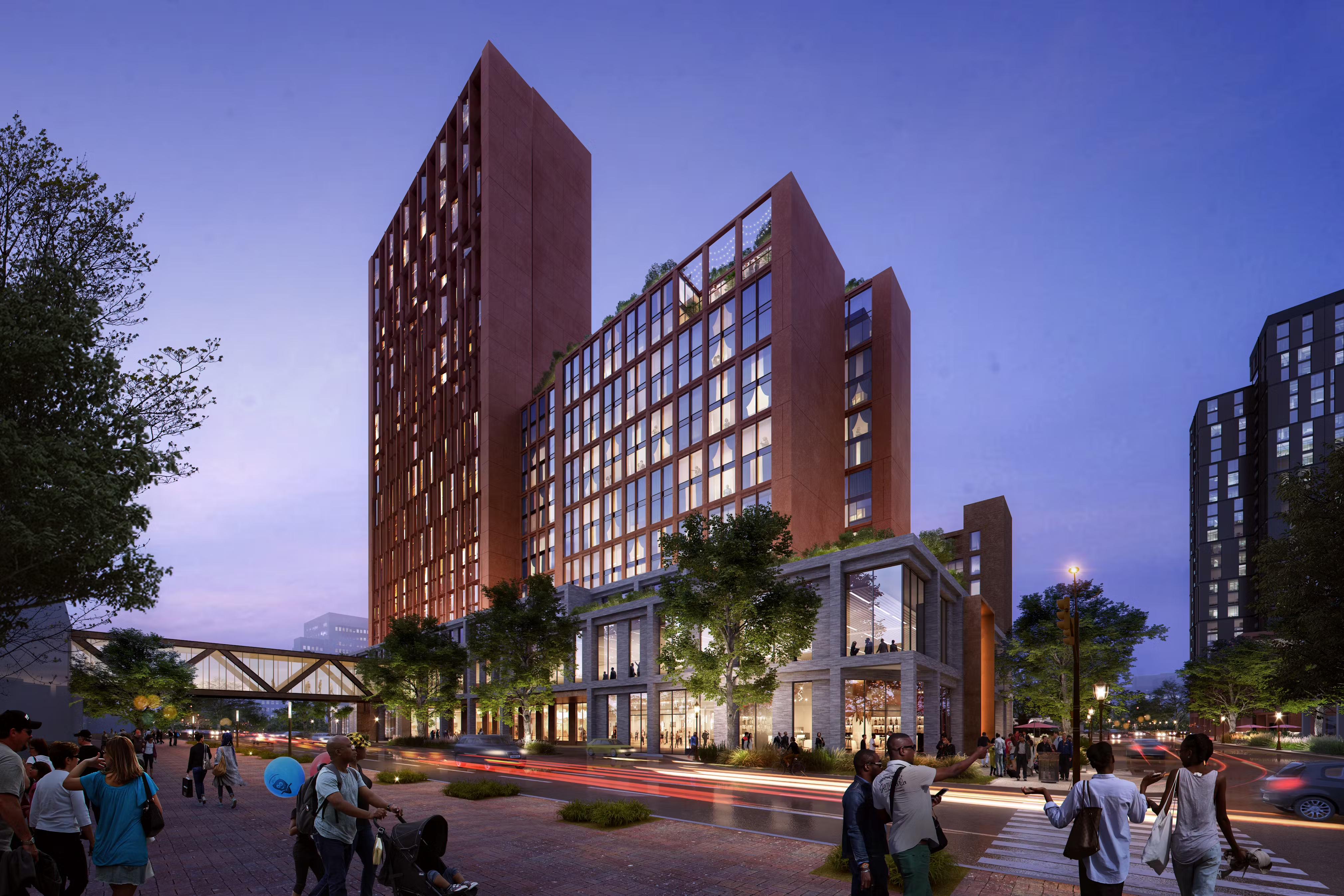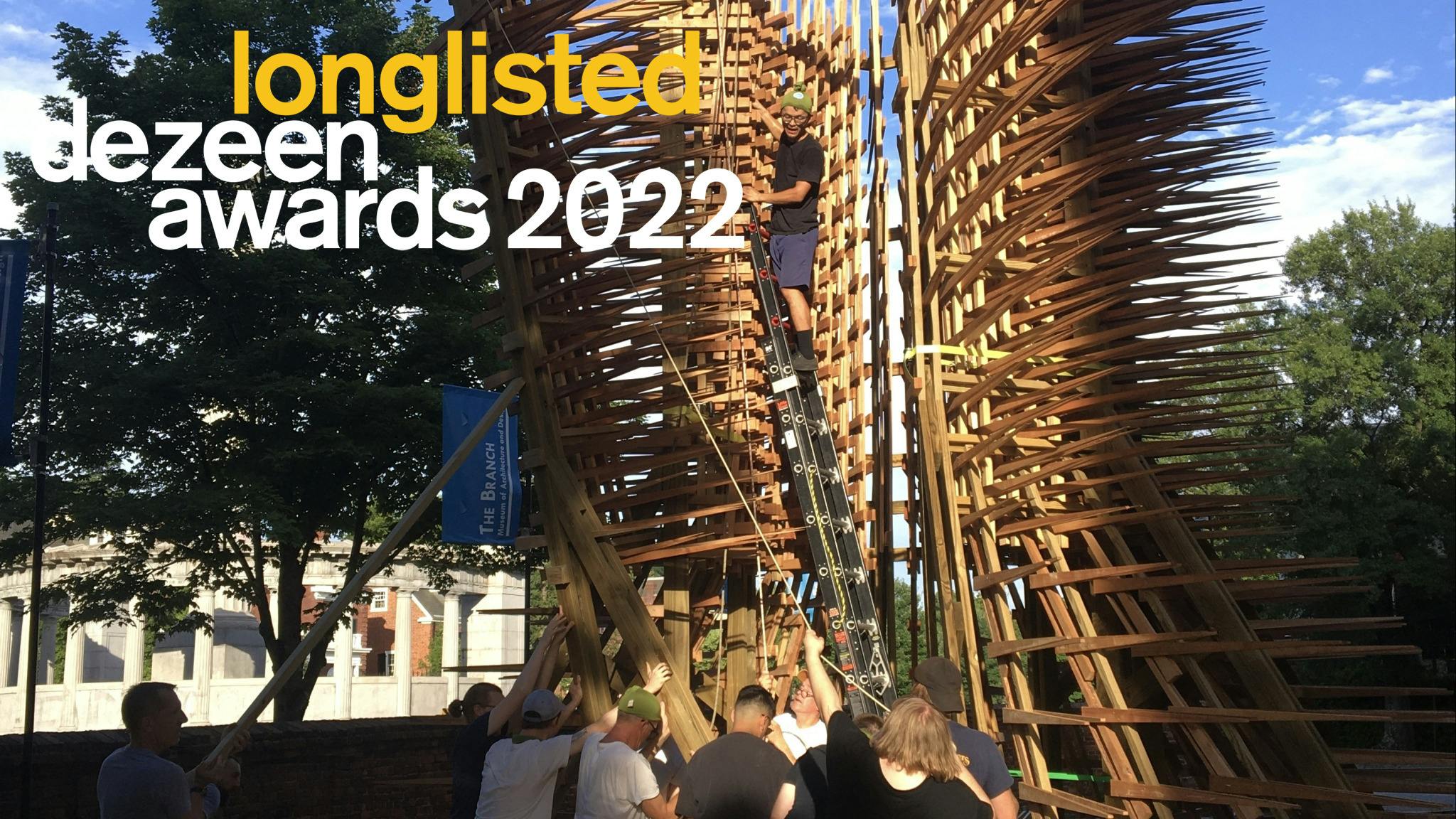

Building the Carbon-Positive City
According to experts, our planet will hit an unsustainable threshold of carbon concentration in the atmosphere by the year 2030. As architects, we have the power to affect change in the 40 percent of the greenhouse gas emissions that the built environment contributes. The urgency for doing things differently has never been more clear. This is why we invited Alan Organschi to be one of Hanbury's 2020 Virginia Design Medalists, so he could share his research on wood and how a broad adoption of mass timber can address climate change in a feasible and meaningful way.


His talk, "Building a Carbon Sink" focused on the carbon storage value of mass timber and regenerative harvesting. Sustainable systems such as photovoltaic arrays, ground sourced heat pumps, highly insulated walls, etc. are useful in our pursuit to lower our carbon footprint, but nothing has the potential to move the needle more than the use of mass timber. To prove this, Alan took us through his calculations of carbon stored and lost in every step of one of his mass timber projects — from the carbon stored in the forest floor, carbon lost when the tree is cut, the rate at which the forest regrows, the embodied emissions from the production of the specified mass timbered products, all the way to the emissions from the site work itself. As a contrast to this, Alan explained the carbon profiles of the alternative building materials to drive home the dire consequences of steel and concrete. And as the material's final benefit, the end of life of a mass timber structure is to reuse the wood or grind it into fibers for use in future building products.
According to Alan, the target mass timber project typology is mid-rise buildings. The question is, how can Hanbury pursue future work and steer client conversation to better align with that strategy? The Southeastern region of the US is one of the largest wood baskets in the world. Southern yellow pine, our native tree species, provides a great opportunity for mass timber production in our own backyard.


Like any big industry shift, the adoption of mass timber is gradual. Barriers exist across a project's lifecycle. Architects have a learning curve for details appropriate to the properties and vulnerabilities of wood. Building codes are slow to embrace the research proving the viability of wood structures. Cost estimators aren't familiar with these materials and use overly conservative numbers out of precaution. Contractors hesitate to work with unknown materials, and clients shy from the overall risk. But the shift is happening nonetheless.
Hanbury has been moving the needle in our practice at an increasing pace toward designing low- and no-impact buildings, but, as William McDonough has famously stated, "Doing better is not good enough." As architects it is imperative to be systems thinkers and not just product specifiers. We are proactively educating ourselves about wood and seeking input from experts like Alan. We are growing our mass timber experience and portfolio with projects at Western Carolina, Clemson, and Princeton. We continue to seek out like-minded building partners with mass timber experience and relationships with progressive wood product manufacturers. It takes leadership to advance real and meaningful change. We will continue to do our part.
graphics courtesy of Alan Organsch
















